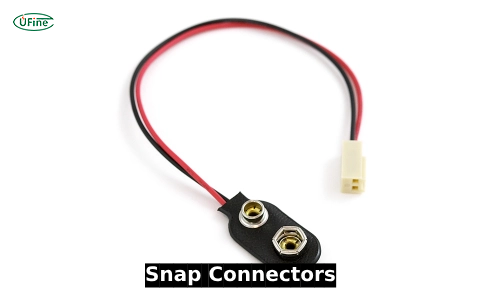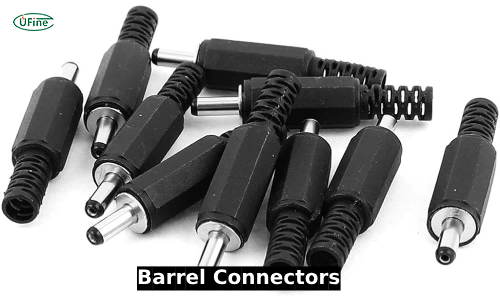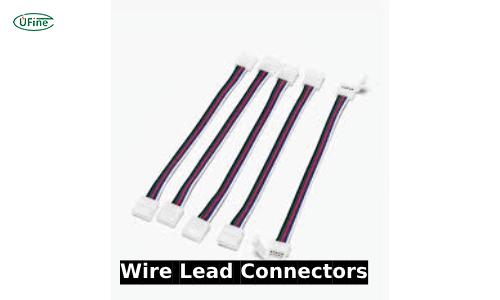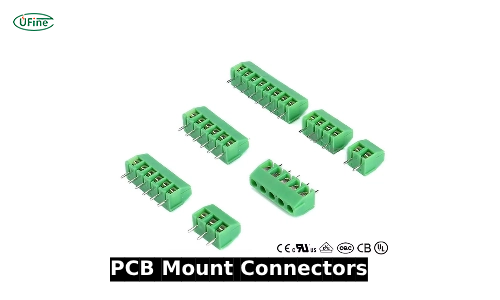A 9V battery connector is a small but essential part of many devices. There are different types, and each has particular uses. This article will help you understand these connectors and how to choose the right one. You will also learn how to install and fix them.
Part 1. What is a 9V battery connector?
A 9V battery connector is a small device that connects a 9V battery to an electronic circuit. It has two terminals: one positive and one negative. These terminals match the battery’s ends. The connector ensures a secure connection for power transfer.
Here are some critical points about 9V battery connectors:
- Shape and Size: They are often rectangular or snap-style.
- Wires usually come with two wires, red for positive and black for negative.
- Materials: Common materials include plastic, metal, and sometimes rubber.
Typical Applications in Electronic Devices
Many everyday devices use 9V battery connectors. They help provide power to gadgets and tools. Here are some examples:
- Toys: Many battery-operated toys use these connectors to run motors and lights.
- Remote Controls: Some remotes use a 9V battery for long-lasting power.
- Smoke Alarms: These essential safety devices often use 9V batteries to stay active.
- Portable Radios: Many radios use 9V batteries with these connectors for precise and reliable sound.
- DIY Projects: Hobbyists and students use them in science projects and homemade gadgets.
These connectors are easy to attach and detach, making them handy for quick battery changes. They help keep your devices running smoothly and safely.
Part 2. Types of 9V battery connectors
There are several types of 9V battery connectors. Each type has unique features and uses. Learning about them helps you choose the right one for your needs.
Snap Connectors:
Snap connectors are famous for their ease of use and secure attachment mechanism.
- Features: They typically have a plastic housing with metal snaps that securely grasp onto the battery terminals.
- Advantages: Easy to install and remove, making them ideal for devices requiring frequent battery changes like smoke detectors and toys.
Barrel Connectors:
Barrel connectors consist of a cylindrical metal or plastic housing that fits snugly over the battery terminals.
- Features: They often include a screw or twist mechanism to secure the connector onto the battery.
- Advantages: It provides a more secure and stable connection suitable for applications where vibration or movement is a concern, such as musical instruments or portable electronic equipment.
Clip Connectors:
Clip connectors use spring-loaded metal clips to grip onto the battery terminals.
- Features: They are typically made of metal for durability and provide a solid electrical connection.
- Advantages: Engineers commonly use a reliable connection in testing and measurement devices where stable electrical contact is crucial.
Wire Lead Connectors:
Wire lead connectors have wires attached to the battery terminals, allowing flexibility in positioning the battery within a device.
- Features: The wires can be soldered or crimped to the battery terminals, providing a customizable connection length.
- Advantages: Ideal for applications where the battery needs to be located remotely from the device, such as in specific medical devices or specialized electronics.
PCB Mount Connectors:
Manufacturers design board mount connectors for soldering onto circuit boards, providing a permanent connection for the battery.
- Features: They come in various shapes and sizes to accommodate different board layouts and battery orientations.
- Advantages: Ensure a secure and reliable electrical connection, commonly used in integrated electronic systems and devices.
Part 3. Materials and construction of 9V battery connectors
Understanding the materials and construction of 9V battery connectors helps ensure you pick a durable and reliable option. Here’s a closer look at what goes into making these connectors.
Common Materials
9V battery connectors use various materials to ensure strength and conductivity. Here are the most common ones:
- Plastic: Often used for the body of the connector. It provides insulation and protection. Plastic is lightweight and durable.
- Metal: Used for the terminals and clips. Metals like nickel and copper are common. They ensure good electrical conductivity.
- Rubber: Sometimes used for extra protection. Rubber can cover the wires or the body of the connector. It adds flexibility and durability.
Construction Features
The construction of a 9V battery connector involves several vital features. These features ensure the connector works well and lasts long.
- Terminal Connections: The metal terminals must fit snugly with the battery. This secure fit ensures a stable connection.
- Wire Attachment: The wires are attached to the terminals. You can achieve this by soldering or crimping. Soldering or crimping creates a strong attachment that prevents the cables from coming loose.
- Insulation: Proper insulation is crucial. It prevents short circuits and protects the user. Manufacturers usually make insulation from plastic or rubber.
- Housing: The housing encases the terminals and wires. It protects them from damage. Housing materials include plastic and sometimes metal.
Part 4. How do you choose the suitable 9V battery connector?
Choosing the suitable 9V battery connector is critical to ensuring your device works well. Here are some essential factors to consider:
Determine Your Needs
First, think about what you need the connector for. This helps narrow down your options.
- Type of Device: Is it for a toy, a smoke detector, or a DIY project?
- Power Requirements: Make sure the connector can handle the power needs of your device.
- Space Constraints: Consider the size and shape of the connector. Will it fit in the space available?
Consider the Connector Type
Different types of connectors suit various applications. Here are some common types:
- Snap-On Connectors: Easy to use and great for toys and small gadgets.
- Clip-On Connectors: Very secure, ideal for smoke detectors and professional equipment.
- Wire Connectors: Flexible and versatile, perfect for DIY projects.
- PCB Mount Connectors: Best for advanced electronics that need a stable connection.
Material and Build Quality
The materials and build quality affect the connector’s durability and performance.
- Materials: Look for connectors made of durable plastic and metal.
- Build Quality: Check for sturdy construction and smooth edges.
Length of Wires
The length of the wires is also essential.
- Short Wires: Good for tight spaces where long wires might get in the way.
- Long Wires: Ideal for projects where you need flexibility and reach.
Additional Features
Some connectors come with extra features.
- Insulation: Extra insulation can provide better protection against short circuits.
- Rubber Coating: Adds durability and flexibility.
Price and Availability
Finally, consider the price and availability of the connectors.
- Budget: Make sure the connector fits within your budget.
- Availability: Check if the connectors are readily available online or in stores.
Considering these factors, you can choose a 9V battery connector that meets your needs and ensures your device works efficiently.
Part 5. Installing and using 9V battery connectors
Installing and using 9V battery connectors is simple if you follow these steps:
Gather Your Tools
Before you start, gather the tools you’ll need.
- Screwdriver: For opening battery compartments.
- Wire Strippers: If you need to strip wire ends.
- Soldering Iron: For soldering wires (if needed).
Prepare the Connector
Get your 9V battery connector ready.
- Check the Wires: Make sure the wires are not damaged.
- Inspect the Terminals: Ensure the terminals are clean and free of debris.
Connect the Wires
Attach the wires to your device.
- Match the Colors: Red wire to positive, black wire to negative.
- Secure the Connection: Use a soldering iron or crimps to secure the wires if needed.
Attach the Connector to the Battery
Now, connect the battery.
- Snap-On Connectors: Snap them onto the battery terminals.
- Clip-On Connectors: Attach the clips to the battery terminals firmly.
Test the Connection
Make sure everything is working.
- Power On Your Device: Turn on the device to check if it’s receiving power.
- Check for Loose Wires: Ensure no wires are loose or disconnected.
Secure the Battery
Finally, secure the battery in its compartment.
- Close the Compartment: Use a screwdriver if needed.
- Check Stability: Make sure the battery is stable and not moving around.
Following these steps, you can easily install and use a 9V battery connector in your device.
Part 6. 9V Battery connectors common issues and troubleshooting tips
Sometimes, 9V battery connectors can have problems. Here’s how to fix common issues:
Loose Connections
Loose connections can cause power loss.
- Check the Terminals: Ensure the terminals are correctly attached to the battery.
- Tighten the Clips: If using clip-on connectors, ensure tight clips.
Corroded Terminals
Corrosion can prevent a good connection.
- Clean the Terminals: Use a small brush or cloth to clean the terminals.
- Apply Contact Cleaner: Use contact cleaner to remove corrosion.
Damaged Wires
Damaged wires can interrupt power flow.
- Inspect the Wires: Look for cuts or frays in the wires.
- Replace Damaged Wires: Replace them with new ones if wires are damaged.
Short Circuits
Short circuits can happen if wires touch each other.
- Check Insulation: Make sure the wires are properly insulated.
- Separate the Wires: Ensure the positive and negative wires are not touching.
Battery Not Fitting
Sometimes, the battery might need to fit better.
- Check the Size: Ensure the battery is the correct size for the connector.
- Adjust the Clips: If using clip-on connectors, adjust the clips to fit the battery better.
Part 7. Final words
Choosing a suitable 9V battery connector is crucial for your device’s performance. Always consider your needs, the type of connector, and its materials. With an appropriate connector, your device will run smoothly and last longer.
Related Tags:
More Articles

What Is a Disk Battery? A Simple Guide for Non-Tech Users
A disk battery is a small, round cell used in watches, remotes, and other electronic devices. It delivers steady power for compact, low-drain devices.
What Battery Powers a Space Heater?
Discover the type of battery that powers space heaters and learn how to choose the right one for efficient heating in your home or office.
What Is an LR14 Battery? Learn About This C-Size Cell
The LR14 battery, also known as a C battery, delivers steady power. Learn its specs, uses, lifespan, and how it compares to other battery types.
Watch Battery Dimensions Chart: Sizes, Voltages, and Equivalents Explained
Understanding watch battery dimensions helps you choose the right size, voltage, and equivalent model to keep your watch running safely and smoothly.
How Long Can You Rely on Battery-Powered Generators?
Discover battery generator runtime & lifespan factors. Learn how to maximize performance and choose the right power solution.







